Want more awareness, traffic, leads, and sales?
Then you need digital advertising in your marketing mix.
This guide explains what it is, why it’s important, and how to get started.
What Is Digital Advertising?
Digital advertising refers to online ads delivered through digital channels such as search engines, social media, websites, and mobile apps.
The goal of digital ads is often to reach your target audience and influence them to take a specific action. Like signing up for a newsletter or making a purchase.
This is different from the traditional advertising we’ve all been exposed to for decades.
Traditional Advertising vs. Digital Advertising
Traditional advertising is the old-school way of reaching audiences through offline media like TV, radio, newspapers, and magazines.
It’s usually expensive and hard to measure.
Digital advertising is the modern way of reaching audiences. And has become more important than traditional advertising for many companies.
Let’s see why.
Why Is Digital Advertising Important?
Digital advertising is important because it allows you to connect with your target audience in ways that traditional media channels don’t.
Think about it—digital platforms together have billions of users. So you can get your brand and message in front of a huge audience, beyond just local markets.
You also get the benefit of advanced targeting capabilities—you can zero in on specific user demographics, interests, and behaviors to serve your ads to just your ideal customers.
Traditional advertising methods don’t allow for the same level of precision.
On top of this, digital ads don’t require a heavy advertising budget. You can get started with just a few hundred dollars and scale up from there.
Plus, digital ads make it far easier for you to track progress, measure and attribute results, and improve on your marketing campaigns as you go.
Types of Digital Advertising
Digital advertising comes in many different forms. Below, we’ve listed some of the major types and provided some specific digital ad examples.
Search Ads
Search ads are text-based ads that appear in search engine results when people look for relevant keywords and phrases.
Here’s an example:

Now, if anyone clicks on this ad, the advertiser (in this case, booking.com) pays Google a small fee. This is known as the pay-per-click (PPC) model.
Search ads are great for capturing the attention of potential customers at the exact moment they’re showing interest in a particular topic, product, or service.
Further reading: How to Create an Effective PPC Strategy in 7 Steps
Social Media Advertising
Social media advertising is running ads on social media platforms like Facebook, Instagram, X (formerly Twitter), and LinkedIn.
These platforms allow you to use different ad formats. Like sponsored posts, carousel ads, video ads, and stories.
Here’s an example of a sponsored post on Instagram:
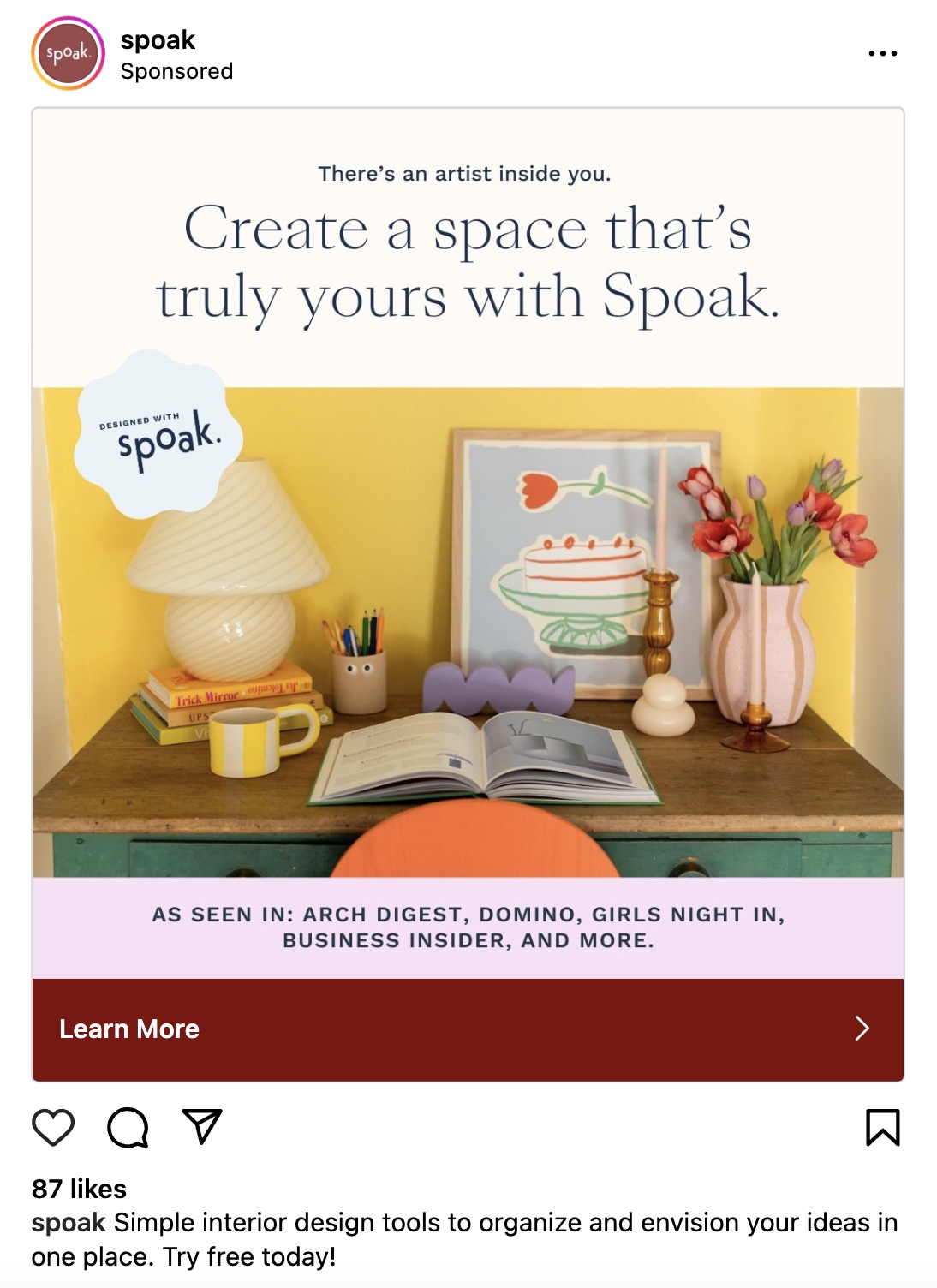
Beyond the wide range of ad formats, social media platforms also allow for highly targeted advertising—thanks to the rich user data they have.
You can target users based on:
- Location
- Demographics (age, gender, etc.)
- Interests and hobbies
- Behaviors like past purchases or site visits
- Job role, education level, and more
Further reading: The Beginner’s Guide to Social Media Advertising in 2024
Display Advertising
Display ads appear on websites and platforms users are browsing that are part of an ad network.
Many marketers run these ads via the Google Display Network (GDN). Which is a powerful digital advertising service that allows businesses to display ads across a vast network of third-party websites and apps.
These ads are typically embedded within website content or displayed alongside it.
Like this:
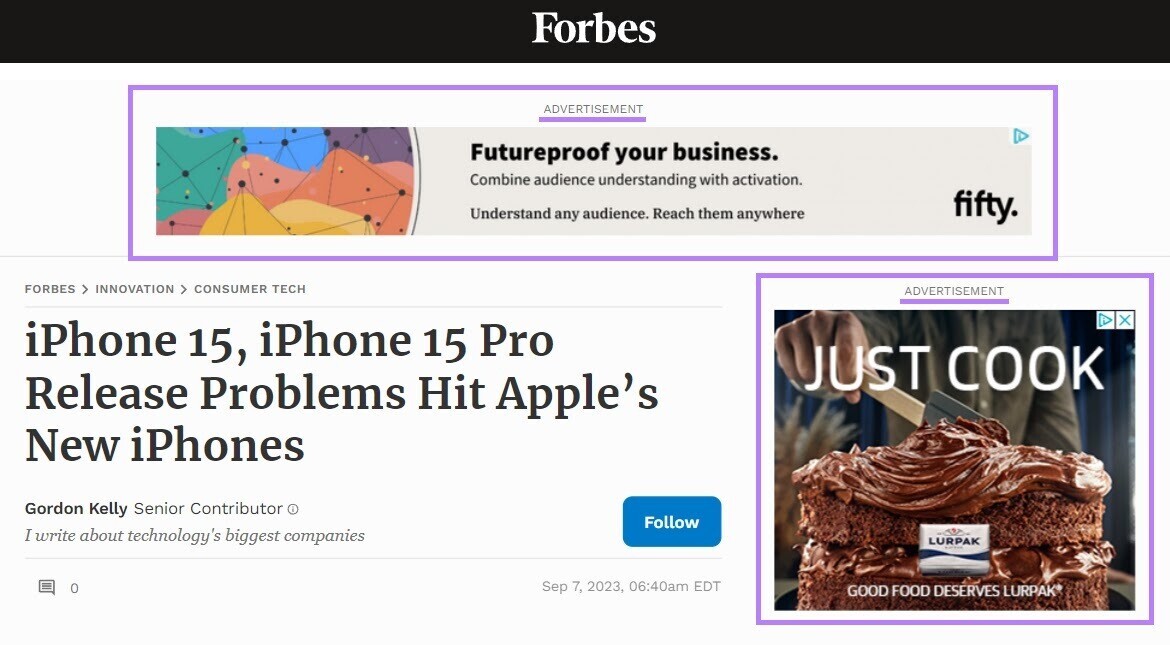
Done right, these ads can be incredibly effective for increasing brand visibility and driving conversions.
Further reading: Display Ads: What They Are, Types, & How They Work
Video Advertising
Video advertising is an increasingly popular form of digital advertising. It’s often found on platforms like YouTube, TikTok, Instagram, and Facebook.
On YouTube, these ads usually play before or during other videos.
Like this:
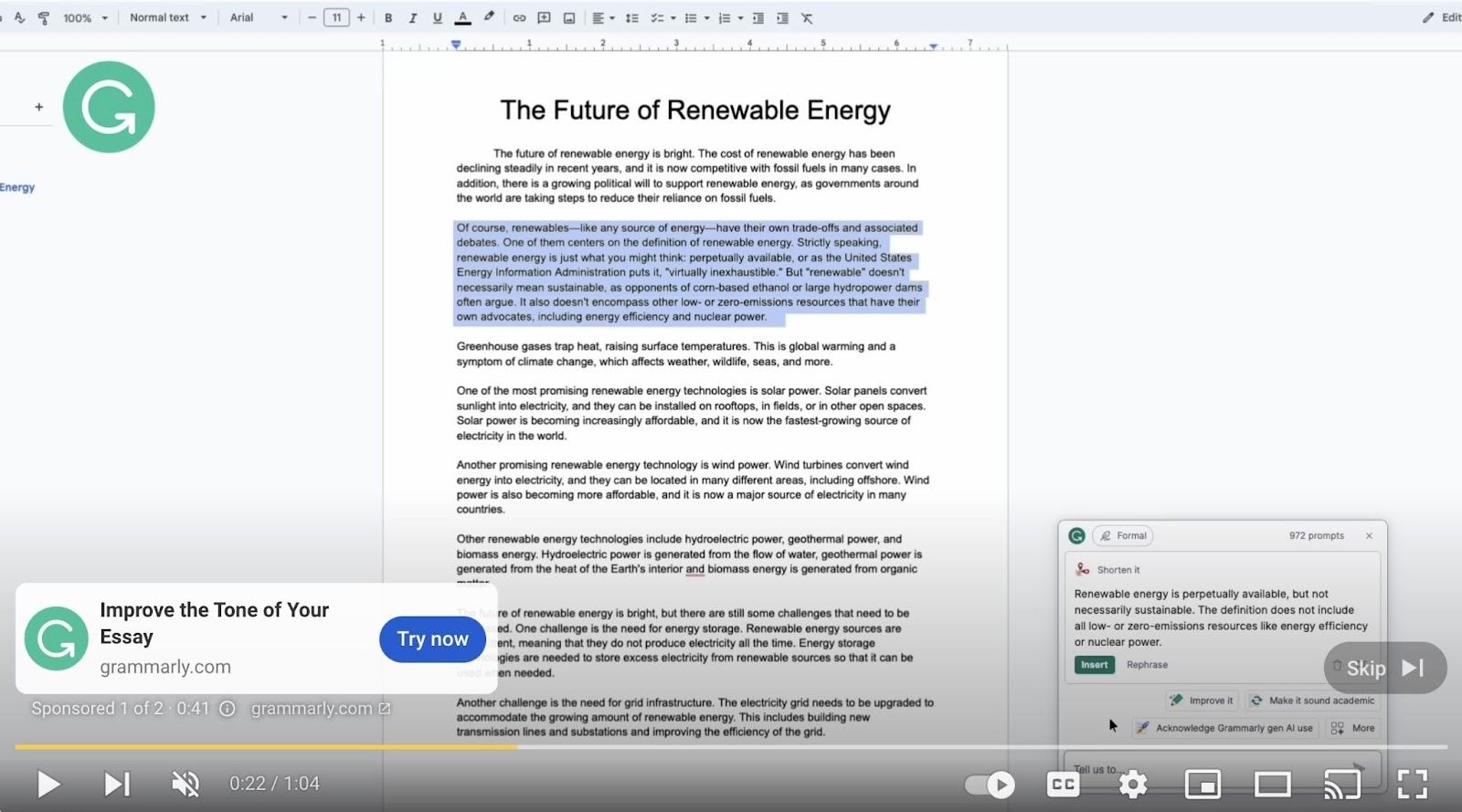
Video ads are often effective because of their ability to grab attention and convey a message in a dynamic and engaging way.
Further reading: Video Advertising: What It Is & How to Get Started
Sponsored Content
Sponsored content refers to content promoting a brand that’s paid for and published by an advertiser.
The goal is to blend branded messaging into high-quality, relevant content that doesn’t feel like an overt advertisement.
Here’s an example of a sponsored post for Visit Rwanda that was published on National Geographic:
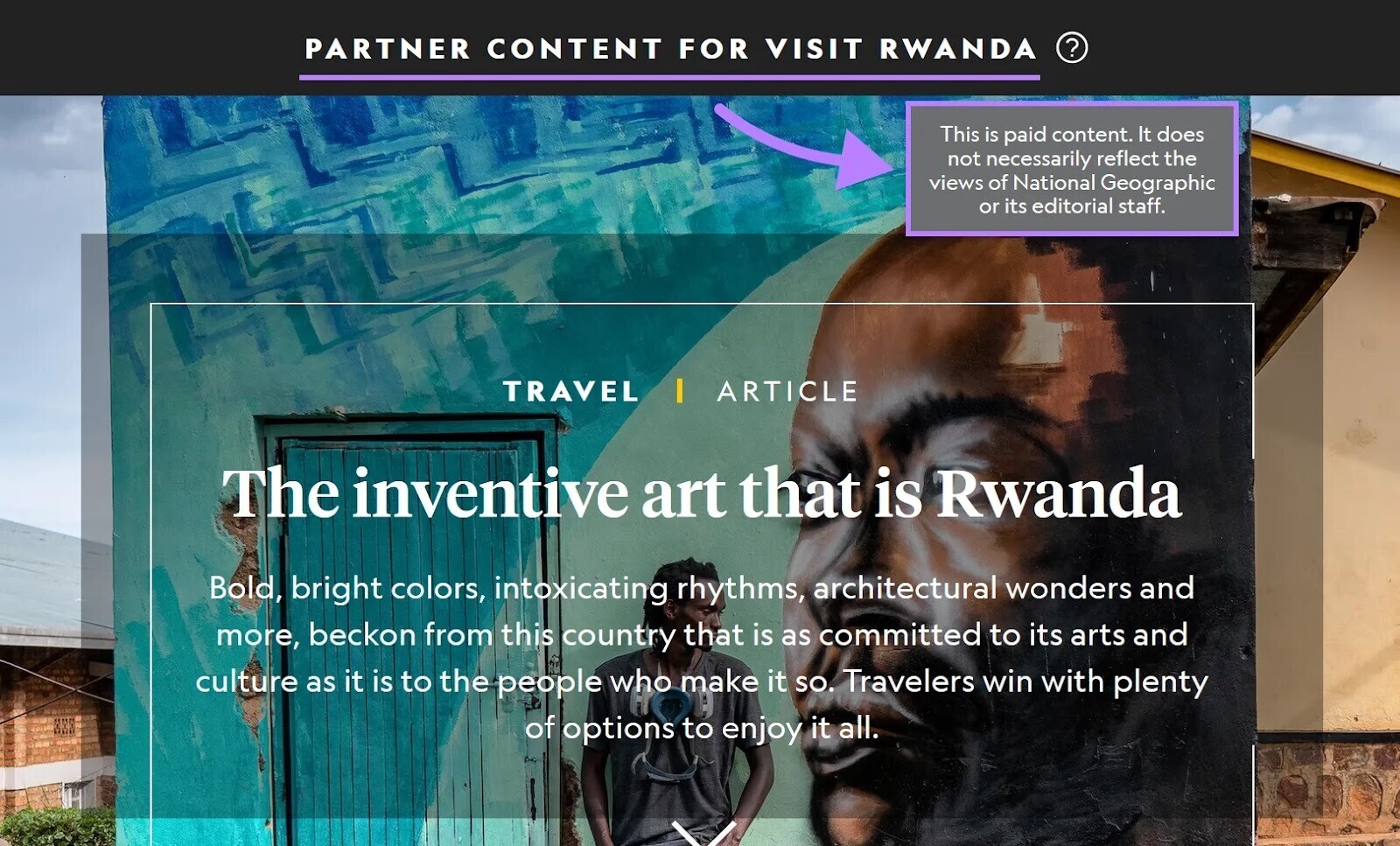
To create sponsored content, you can find relevant publishers in your industry. And contact them directly from their website.
Many sites have dedicated sponsored content rates and packages.
Influencer Marketing
Influencer marketing leverages influential social media personalities to promote products, services, or brand messages.
For example, Purina worked with this Instagram creator to promote their cat food:
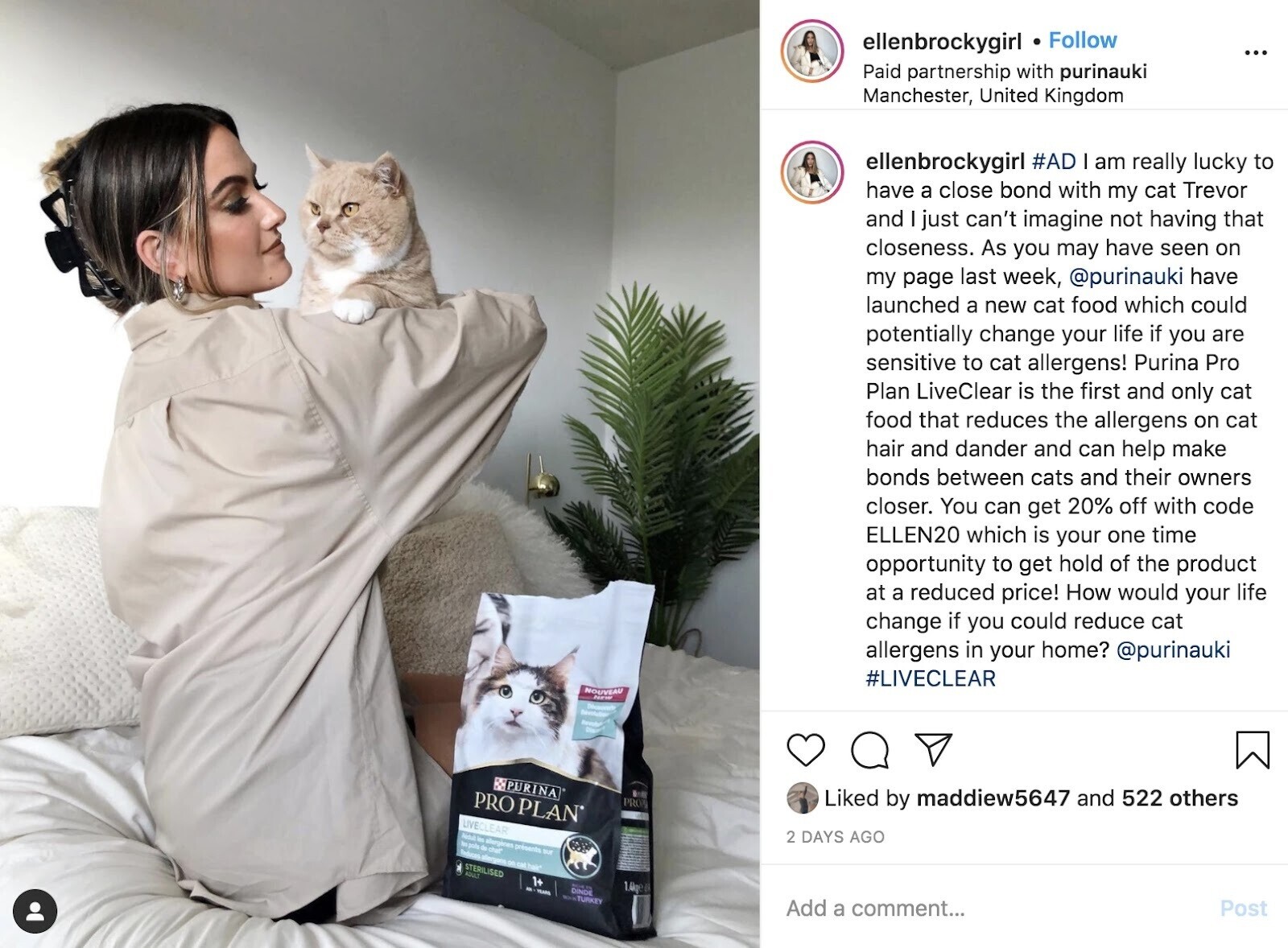
Influencer marketing works because it taps into the trust and credibility that social media influencers have established with their followers.
Further reading: Influencer Marketing: What Is It and How to Build a Solid Strategy
Affiliate Marketing
Affiliate marketing means working with publishers to promote your business in exchange for a commission on the resulting sales.
For example,this article from Wired contains affiliate links to mattress websites. So, if a reader clicks one and makes a purchase, Wired earns a commission.
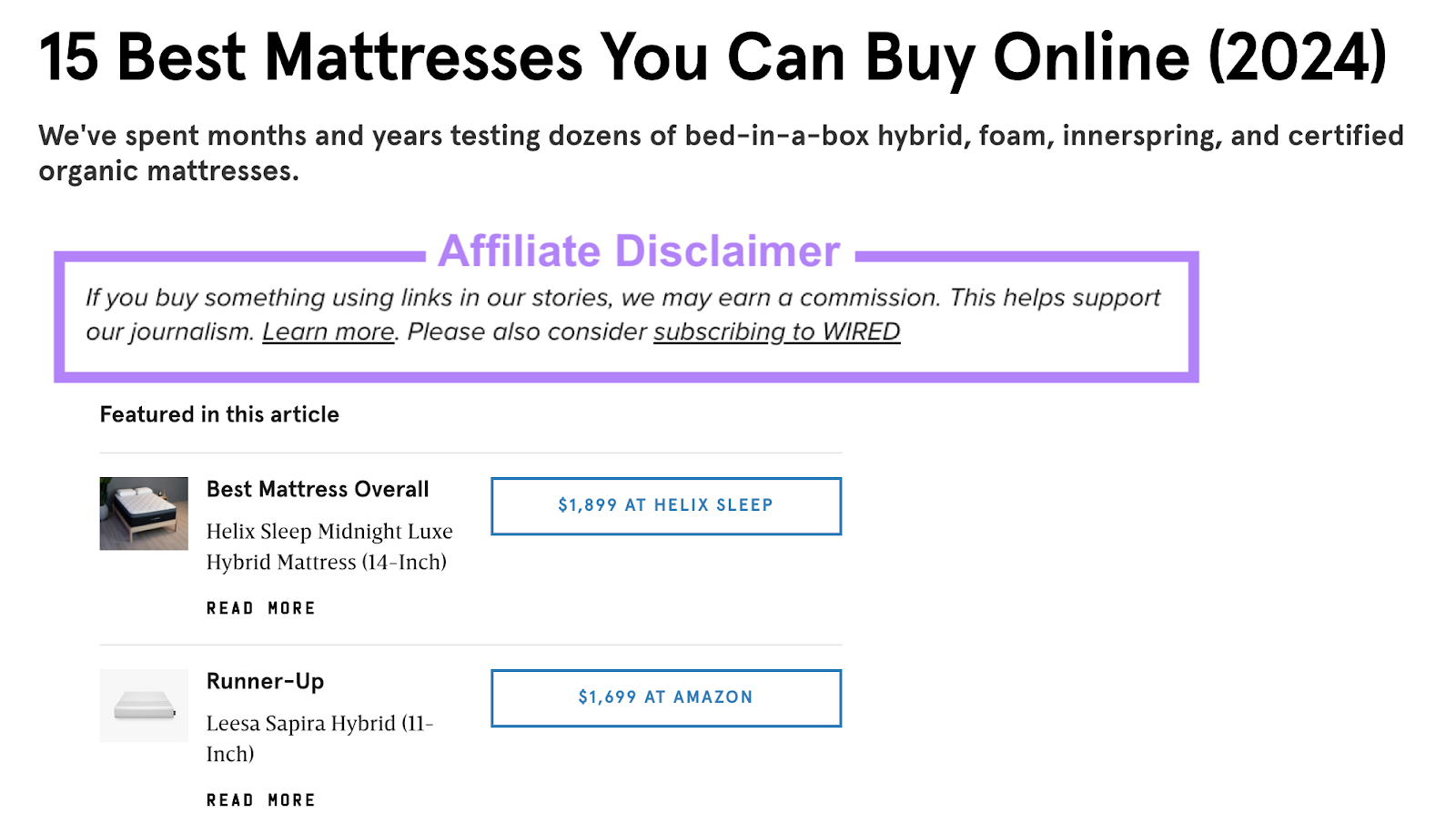
The best part about affiliate marketing is that it’s performance-based and there’s no up-front cost involved. Meaning you only pay publishers if they generate sales for you.
There are lots of platforms out there that can help you get started with affiliate marketing. Some popular ones are GiddyUp, ShareASale, and ClickBank.
These platforms act as middlemen and connect you with publishers in your industry. So you can partner with them.
How to Create a Digital Advertising Strategy
Here are the steps you need to follow to create a solid digital advertising strategy:
1. Understand Your Audience
First, you need to gain a deep understanding of your target audience.
This allows you to craft ads with relevant messaging and choose the best platforms to run them on.
Use Semrush’s One2Target tool to learn about your target audience.
Open the tool, enter up to five competitors’ websites, and click “Analyze.”
(Don’t worry that this is based on competitors. Their audiences reflect your target audience’s characteristics.)
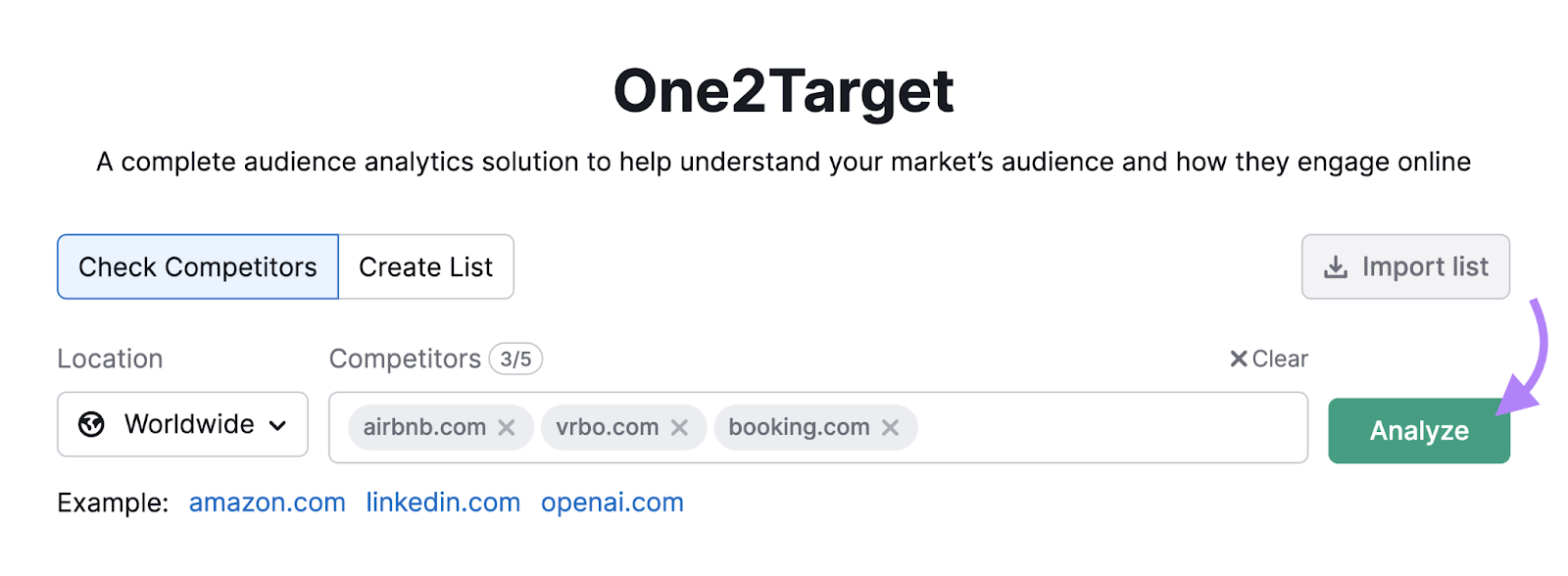
You’ll see a lot of different information.
For example, the “Demographics” tab shows you the different age brackets your audience falls into and what their gender breakdown looks like.
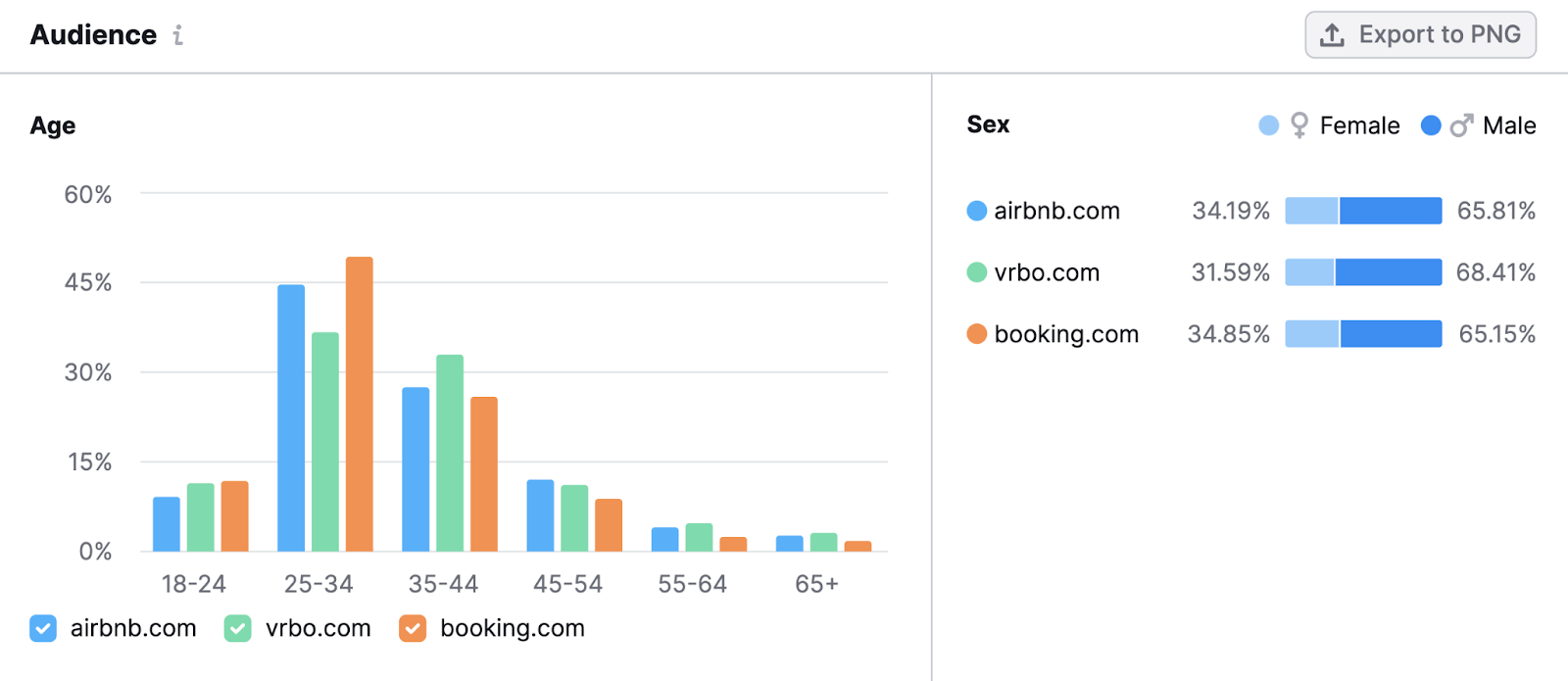
This can help you tailor your ad language and tone to resonate with specific segments.
For instance, you may use more youthful language and visuals if the audience skews younger.
The “Socioeconomics” tab reveals your audience’s household size, income level, etc.
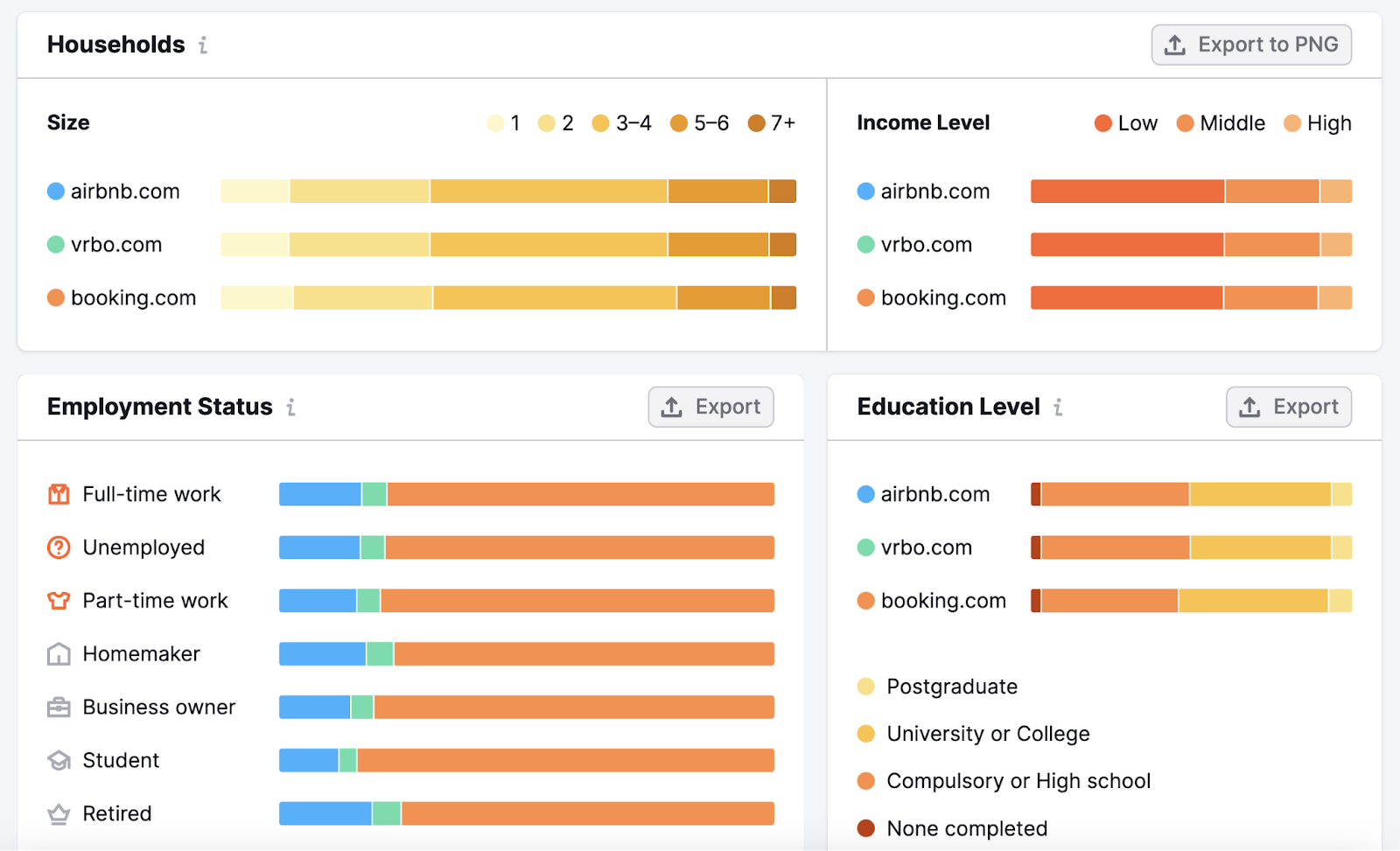
This information helps you craft ads that highlight products and/or services that make sense for their income levels and household needs.
And the “Behavior” tab provides insights into where your audience spends time online.

And what social media platforms they use.
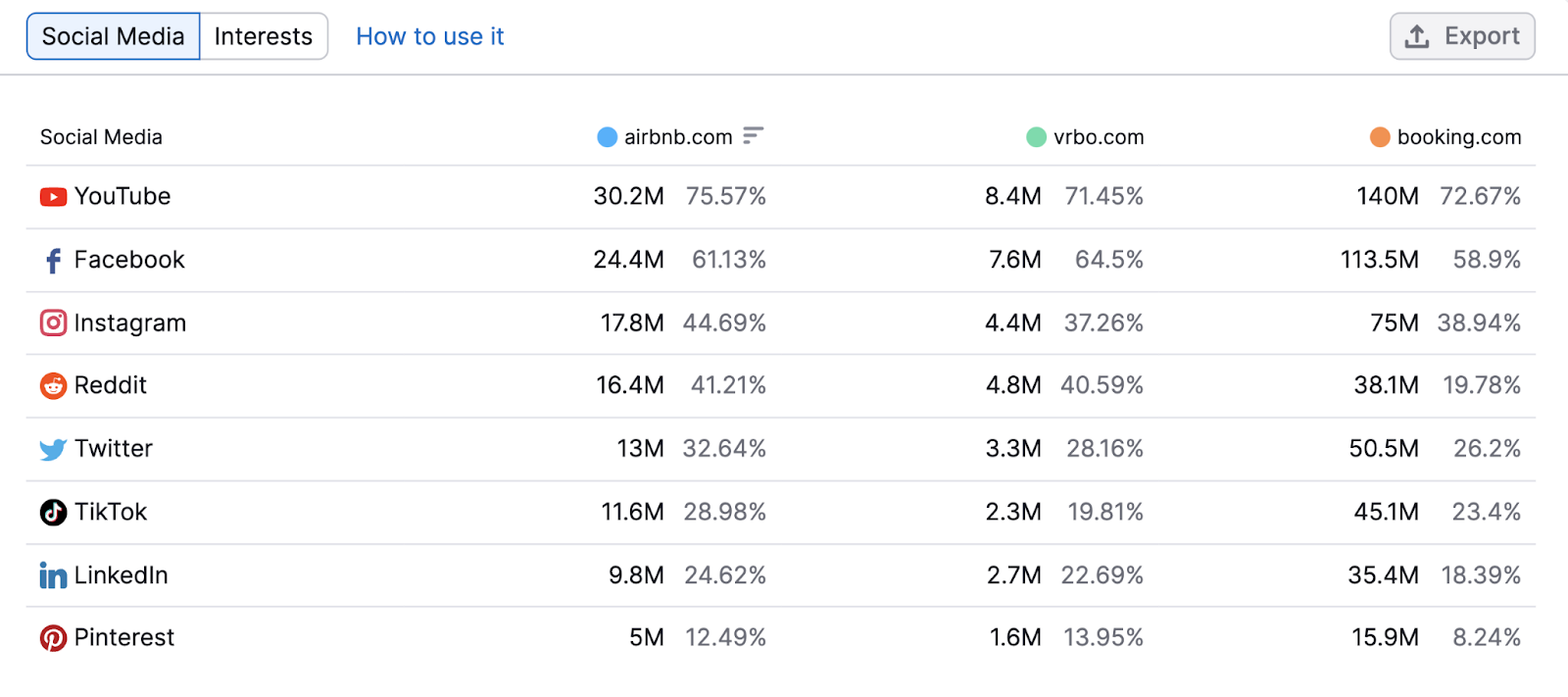
Place your ads on those sites and platforms for the best visibility with your target audience.
2. Set Goals
The next step is to set clear goals for your campaigns.
Specifically, decide exactly what you want to achieve with your advertising campaigns and by when. To give your advertising campaigns direction.
Consider mapping out all this information:
- Goal: What you exactly you want to achieve
- Deadline: When you want to achieve results
- Metrics: How you’ll measure whether you were successful
- Critical success factors: A step-by-step overview of what needs to happen to achieve your goal
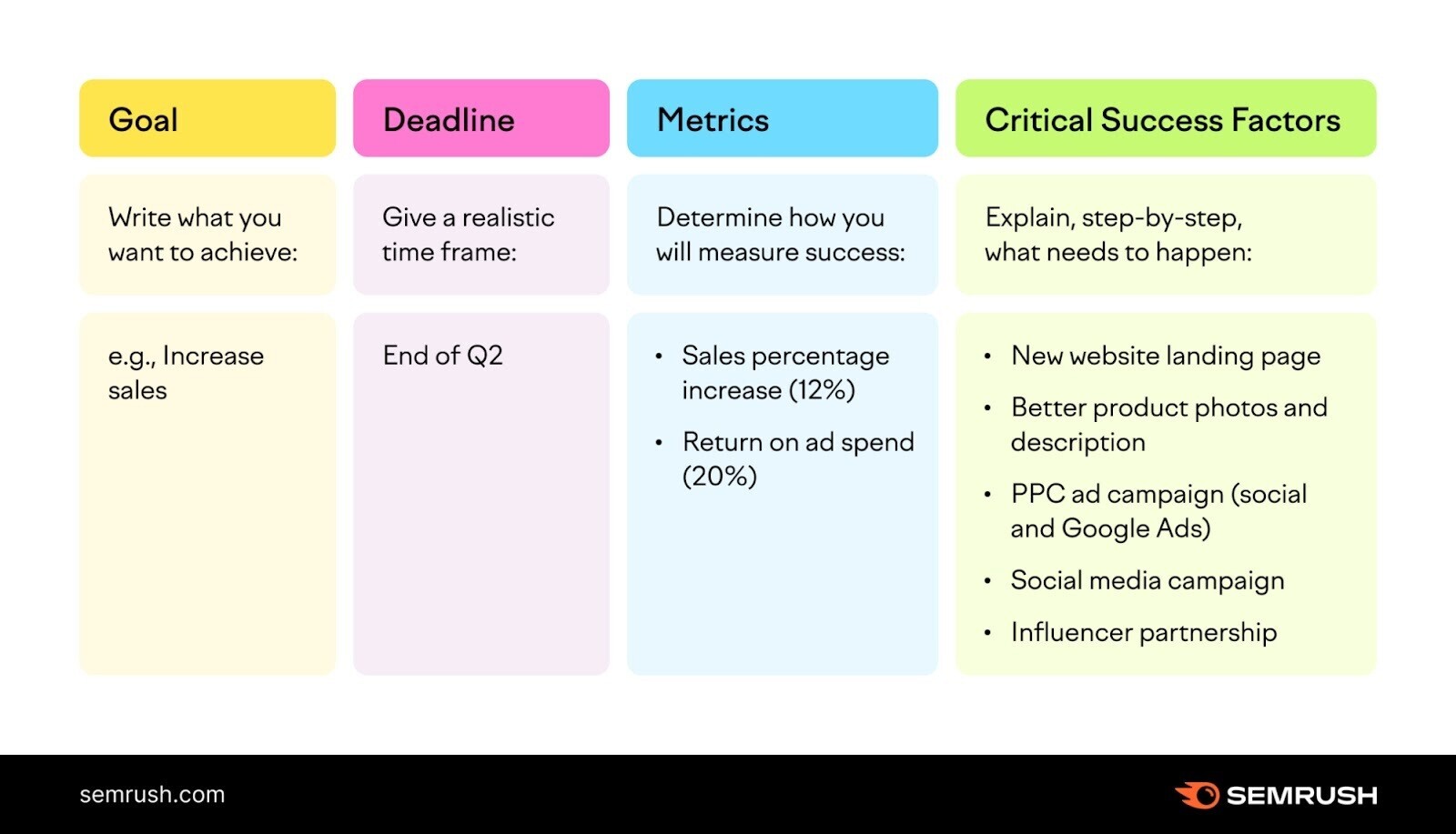
3. Choose Your Advertising Mix
Once your goals are clear, the next step is to create a plan of action. And determine which advertising options you’re going to use.
Search ads? Social media ads? Display ads? Video ads? Affiliate marketing?
Decide this based on your target audience, campaign objectives, and budget considerations.
For example, leveraging video ads on platforms like YouTube and TikTok could be effective if your goal is to increase brand awareness among a younger demographic.
But if your goal is focused on lead generation, search ads and affiliate marketing may allow you to reach people who are more ready to engage.
How you allocate budget across different channels is also important.
For instance, you may run YouTube ads, Facebook ads, and Google search ads. With search ads receiving the largest budget allocation due to its strong lead gen capabilities.
Consider all these factors. So you can create a solid digital advertising plan.
4. Measure Campaign Results
When running campaigns, you need to track metrics to measure your performance.
This helps you identify areas for improvement.
Some common metrics to look at include:
- Return on ad spend (ROAS): the revenue generated from all your advertising expenditure
- Cost per impression (CPM): the cost per thousand impressions (or views)
- Click-through rate (CTR): the ratio of clicks to impressions for your ad
- Cost per click (CPC): the cost you paid when someone clicked on your ad
- Conversion rate: the percentage of people who take a desired action (i.e., make a purchase or download a brochure)
- Engagement rate: the percentage of people who engage with your ad in some way relative to the number of impressions it received
The specific metrics you’ll evaluate depend on your goals and what types of ads you’re running.
Digital Advertising Tools to Improve Your Campaigns
Digital advertising tools are helpful for managing and optimizing your campaigns based on data.
Here’s a roundup of the best tools:
PPC Advertising Toolkit
Semrush’s PPC Advertising Toolkit helps you plan, manage, and optimize your digital advertising campaigns. It includes:
- Advertising Research: Reverse engineer your competitors' search ad campaigns. Uncover what keywords they target and the ad copy and landing pages they use.
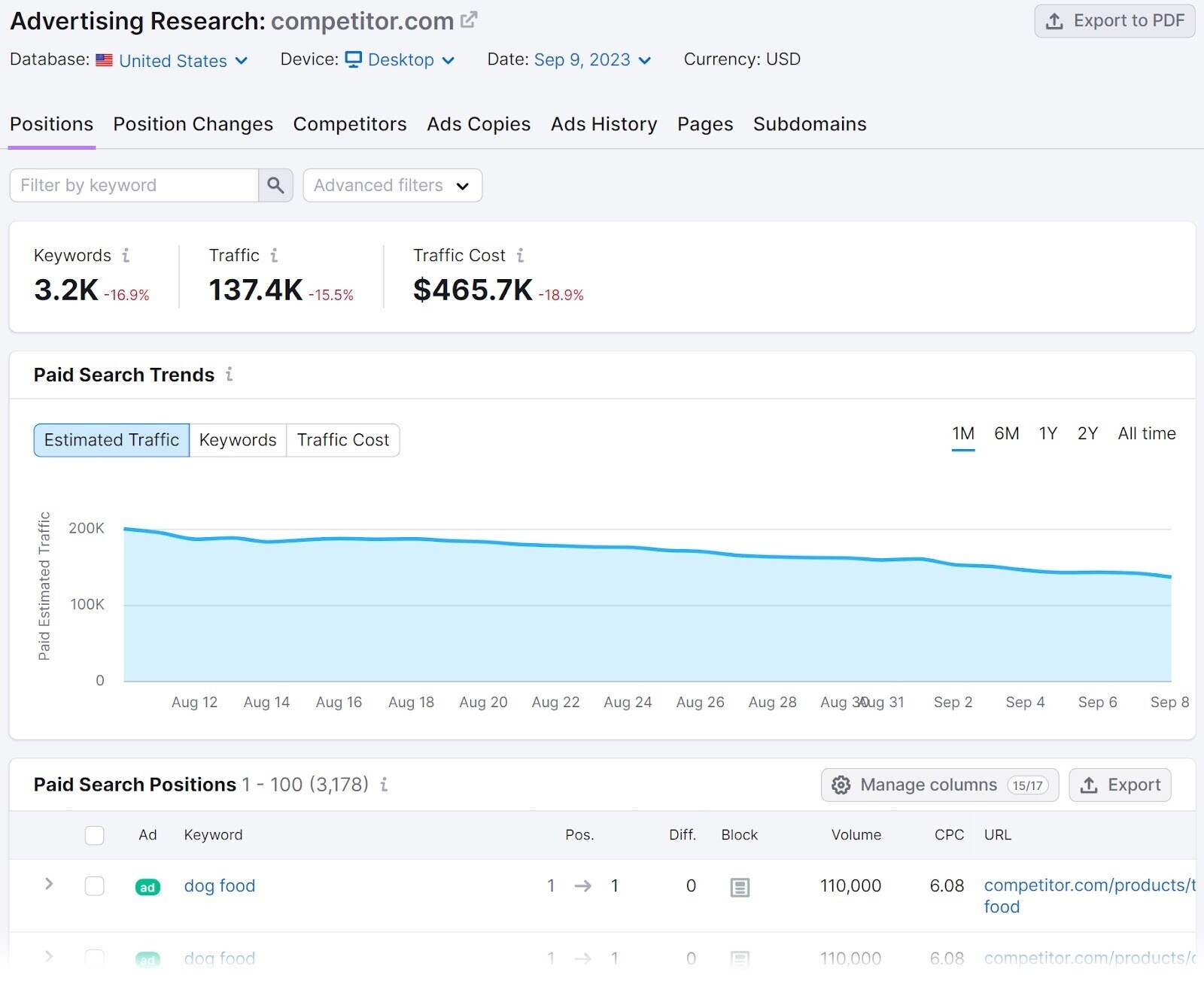
- PLA Research: Analyze your competitors’ Google Shopping campaigns
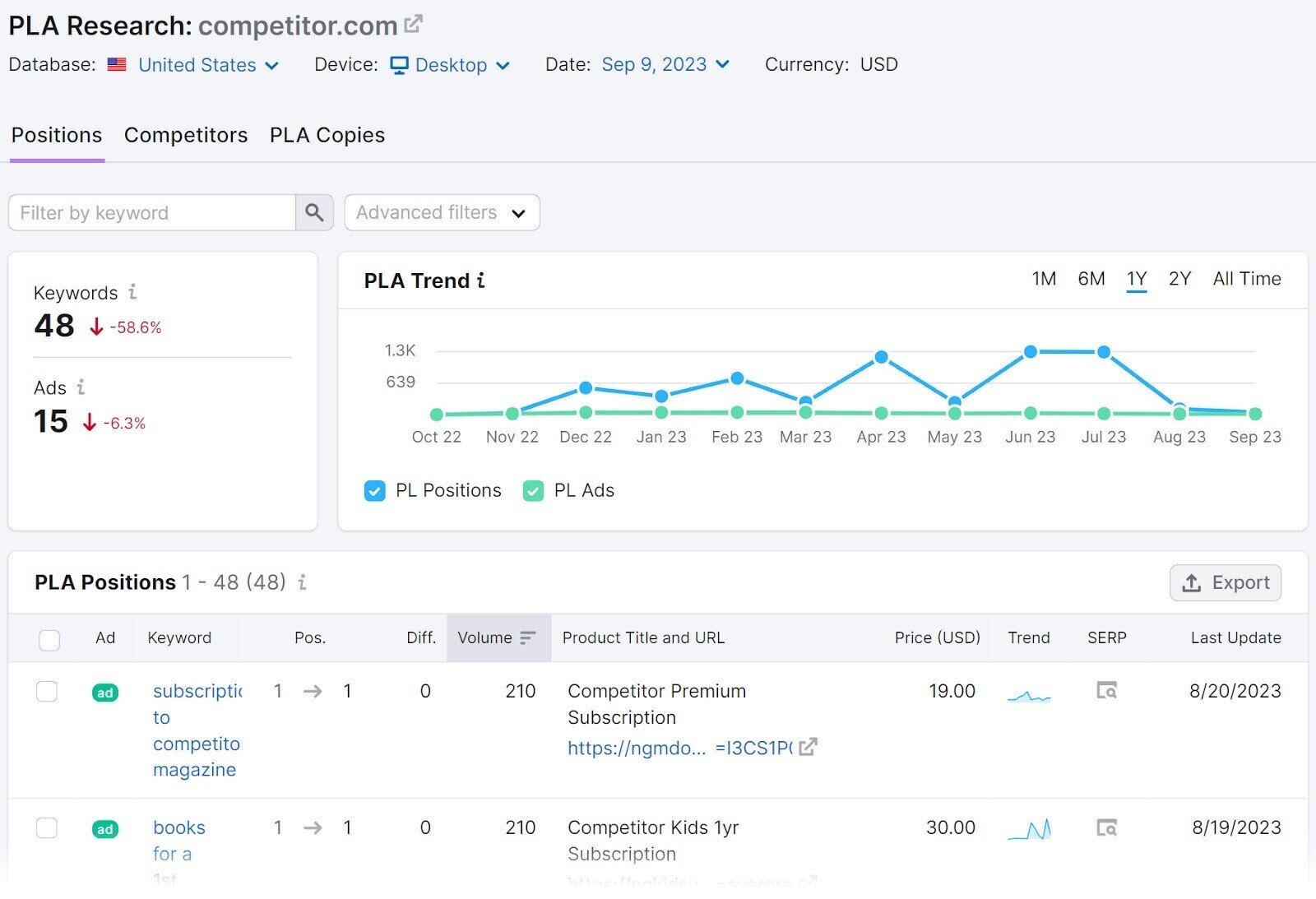
- Keyword Gap: Find keywords that competitors bid on but you don’t
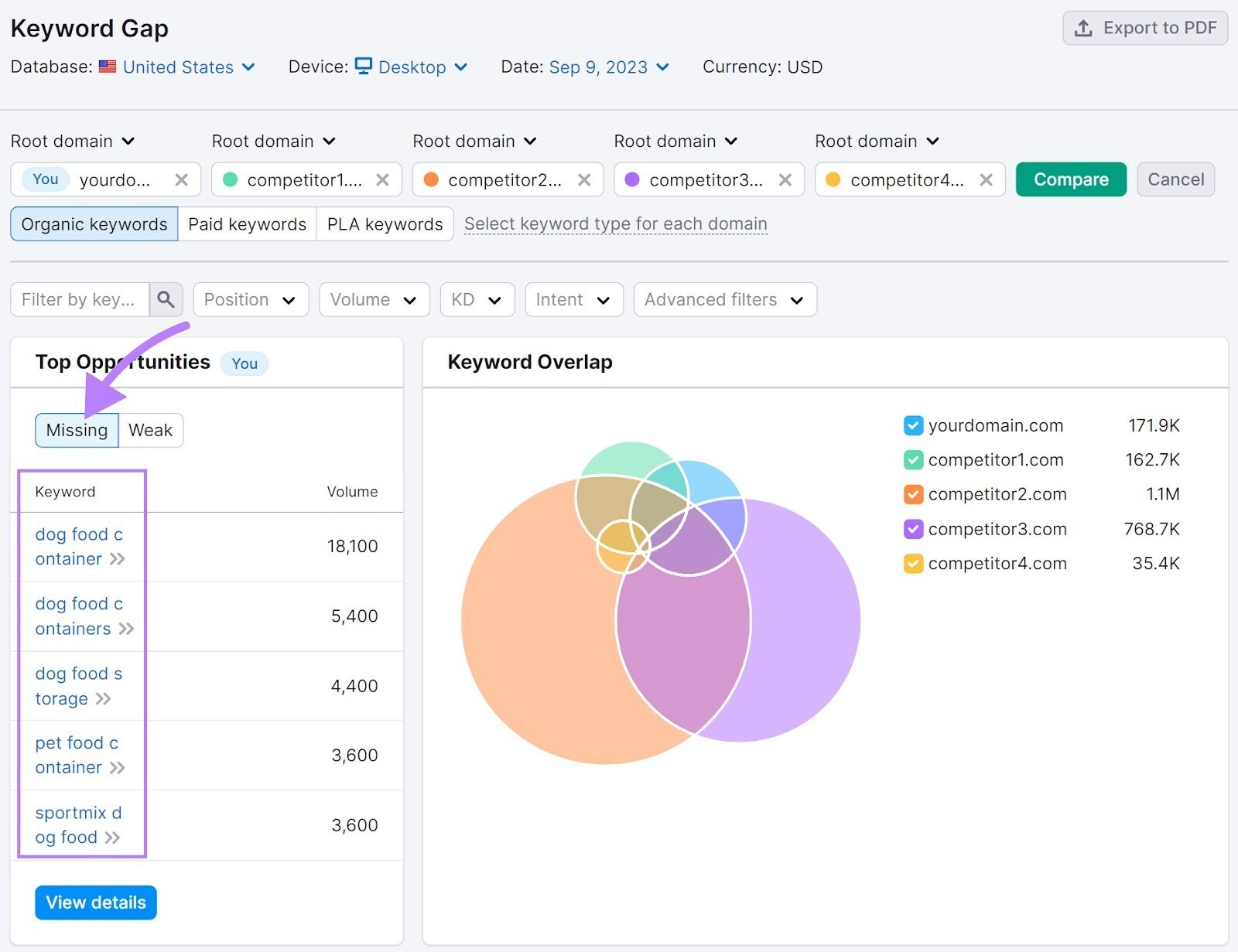
- Keyword Magic Tool: Find the best keywords based on how often people search for them (Volume) and how much would they cost per click (CPC)
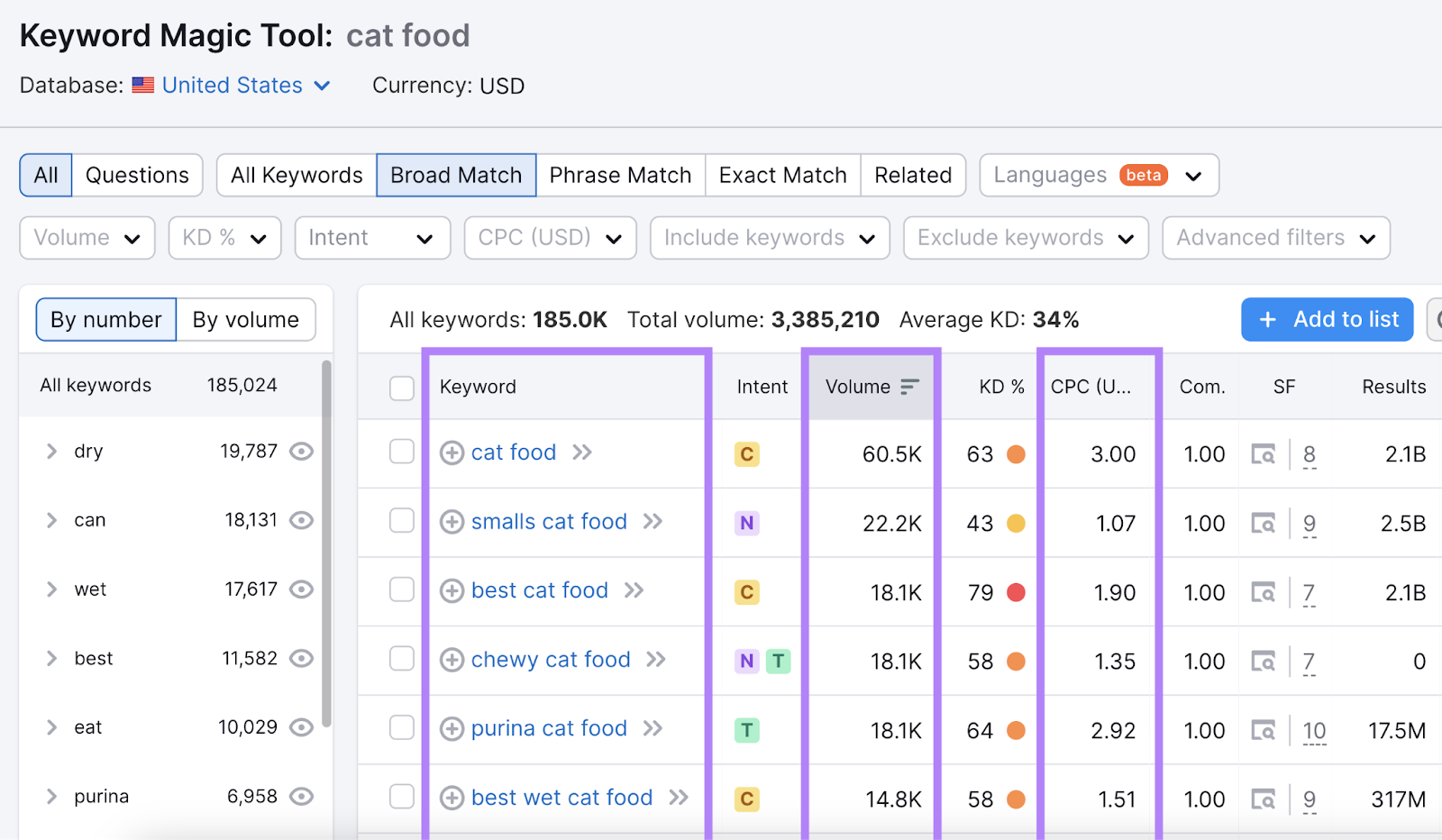
- PPC Keyword Tool: Save time when setting up new Google Ads campaigns by organizing your keywords at the campaign and ad group level. Then, import your whole plan directly into Google Ads.
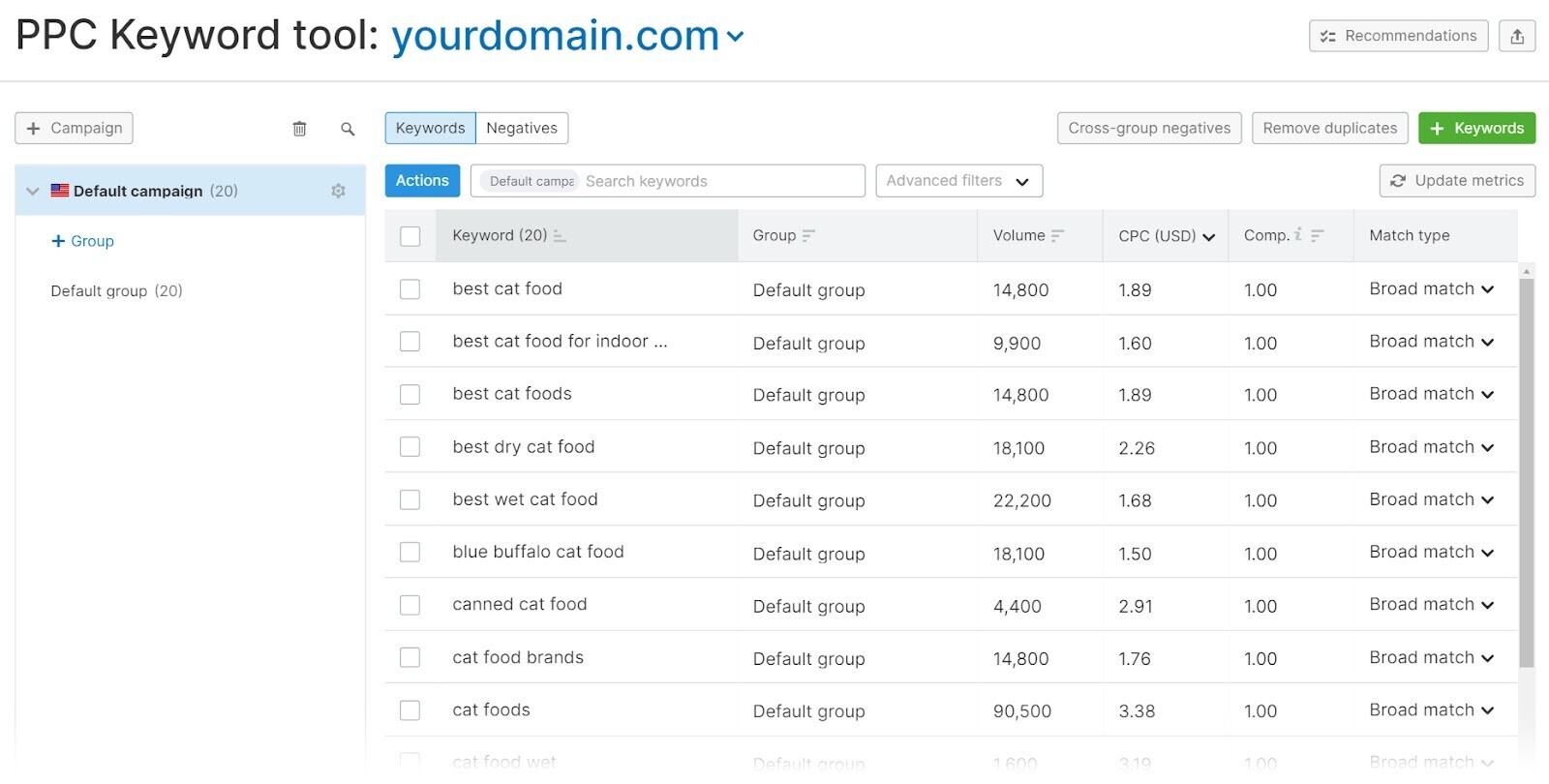
For advice on using these digital advertising tools, check out our knowledge base.
Ads Launch Assistant
The Ads Launch Assistant app makes launching your first Google Ads campaign easy, even if you're new to digital advertising.
When you follow the setup wizard’s guidance, the tool creates your Google Ads account and builds your inaugural campaign for you. Plus, an AI assistant provides customized recommendations along the way.
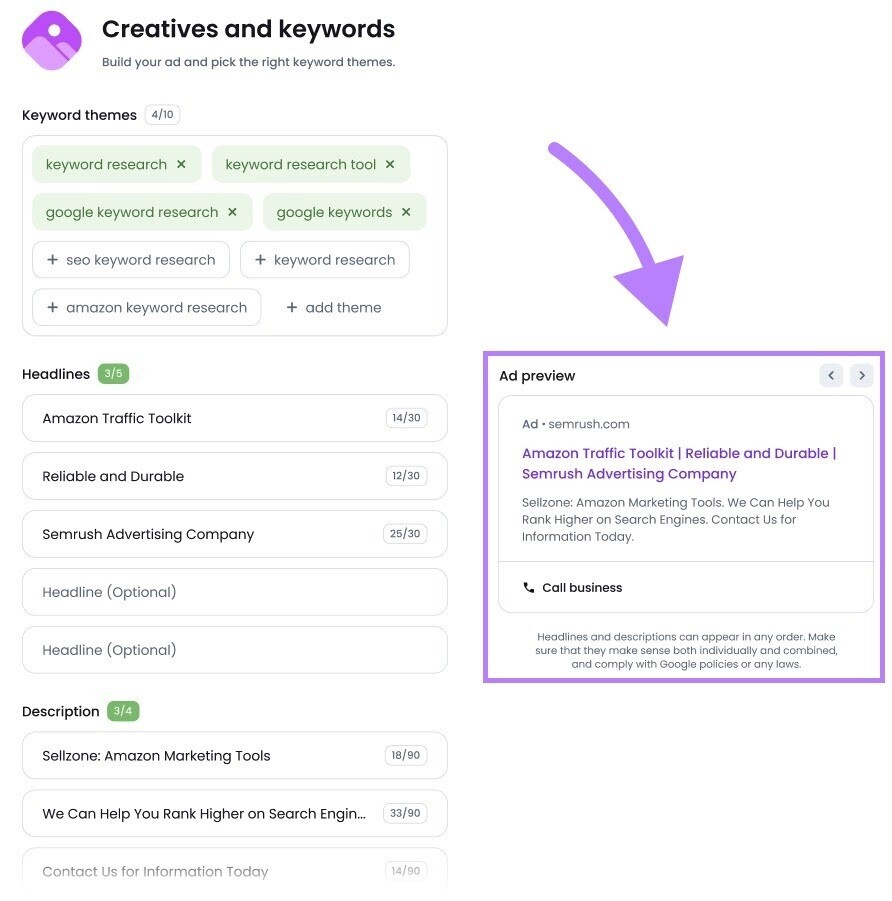
The app also enables easy performance tracking. So you can optimize your budgets and maximize the impact of your digital ad spend.
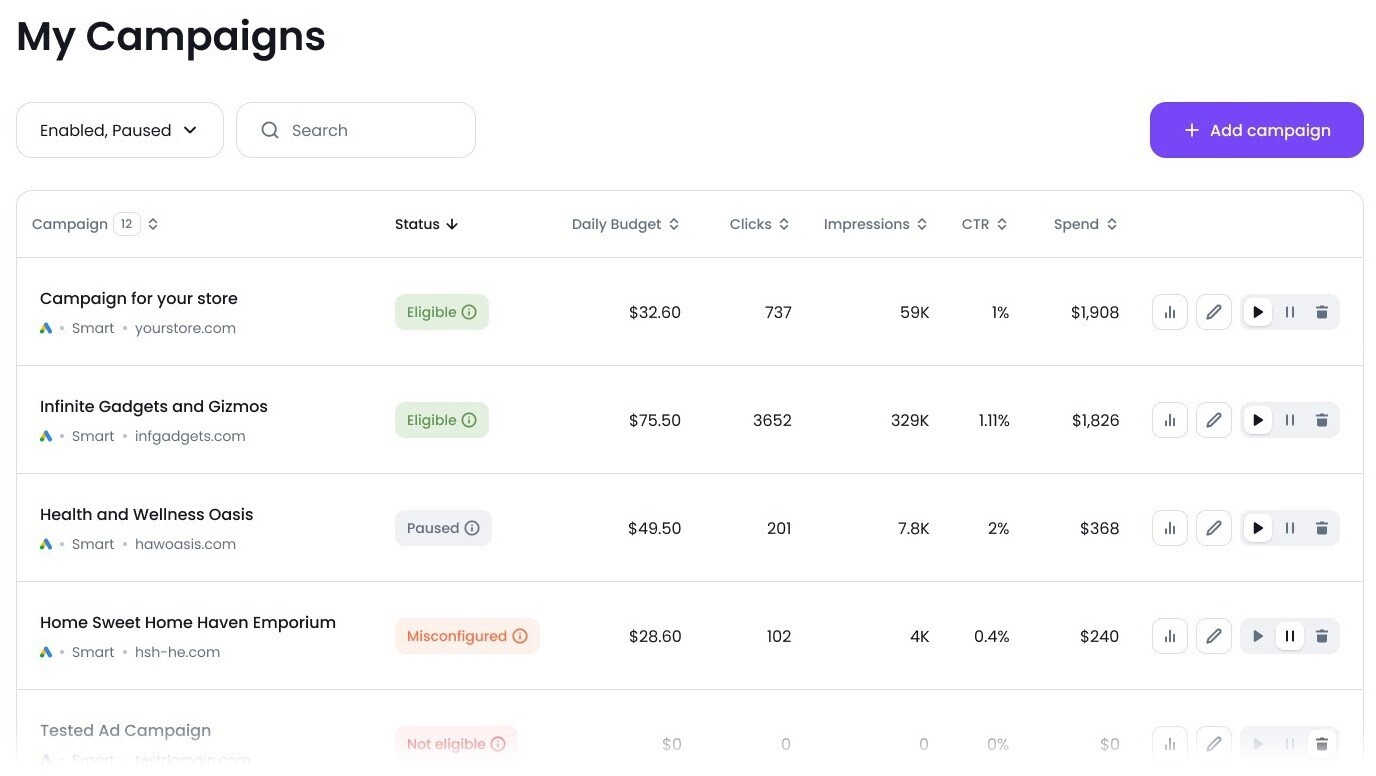
AdClarity – Advertising Intelligence
The AdClarity – Advertising Intelligence app allows you to analyze competitors’ digital advertising campaigns. So you can learn from their successes and failures.
After starting your free trial, add a competitor’s domain.
Then, choose the channel(s), device type, time range, and country to analyze.

The app provides the following data through easy-to-read tables and charts:
- Estimated expenditure and impressions
- Ad placement distribution
- Ad buying methods
- Expenditure trends
- Top campaigns
- Top publishers and apps
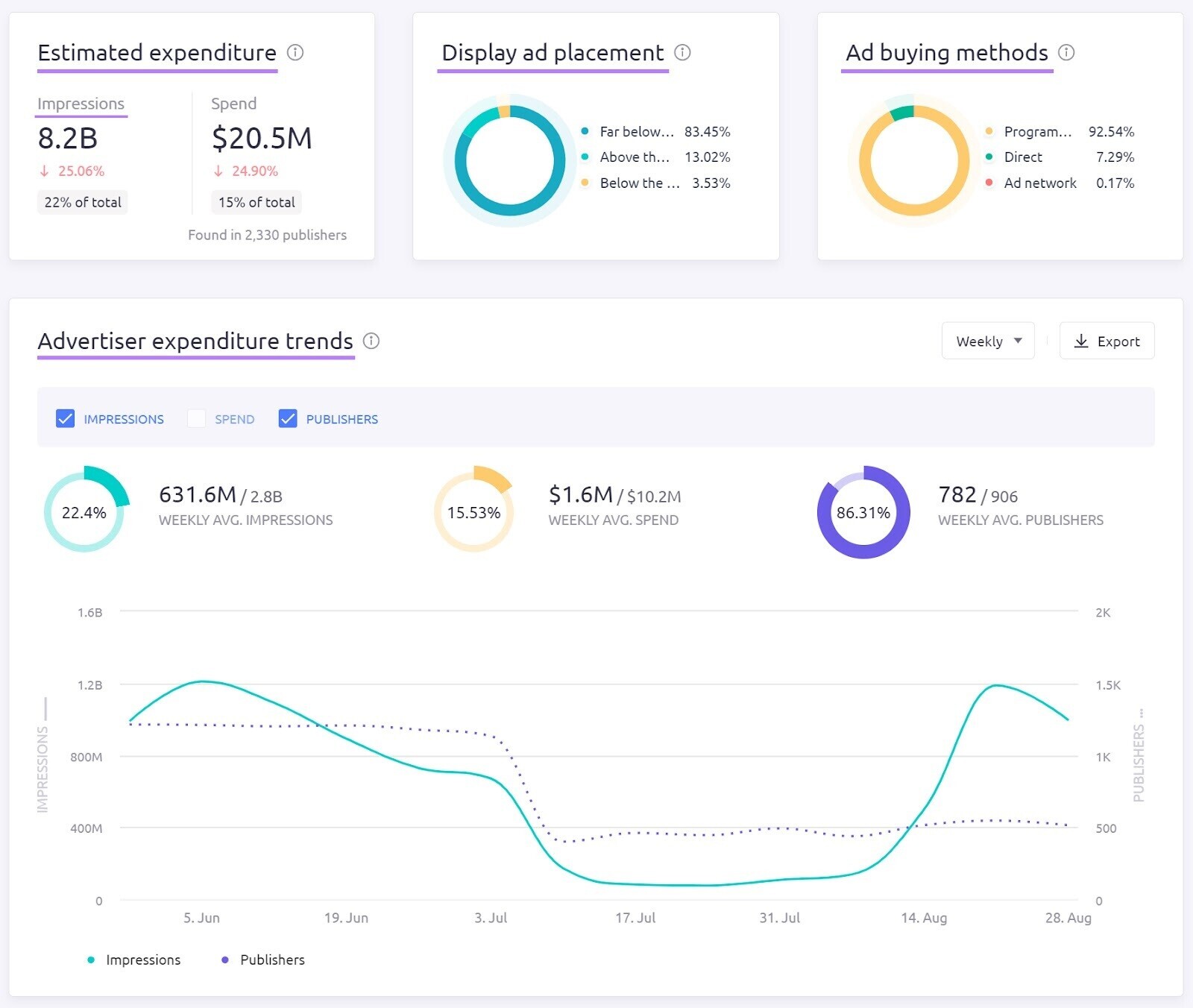
Plus, you can check out your rival’s digital advertising examples for yourself.

The AdClarity app also allows you to export data, save your favorite reports, and compare different competitors.
Instant Banner Generator
The Instant Banner Generator makes it easy to create social media and display ad banners.
After signing up, choose your banner format(s) and upload your logo. Then, add the image and text you want to use on your banner.
The app will then use AI to generate a selection of attention-grabbing banners.
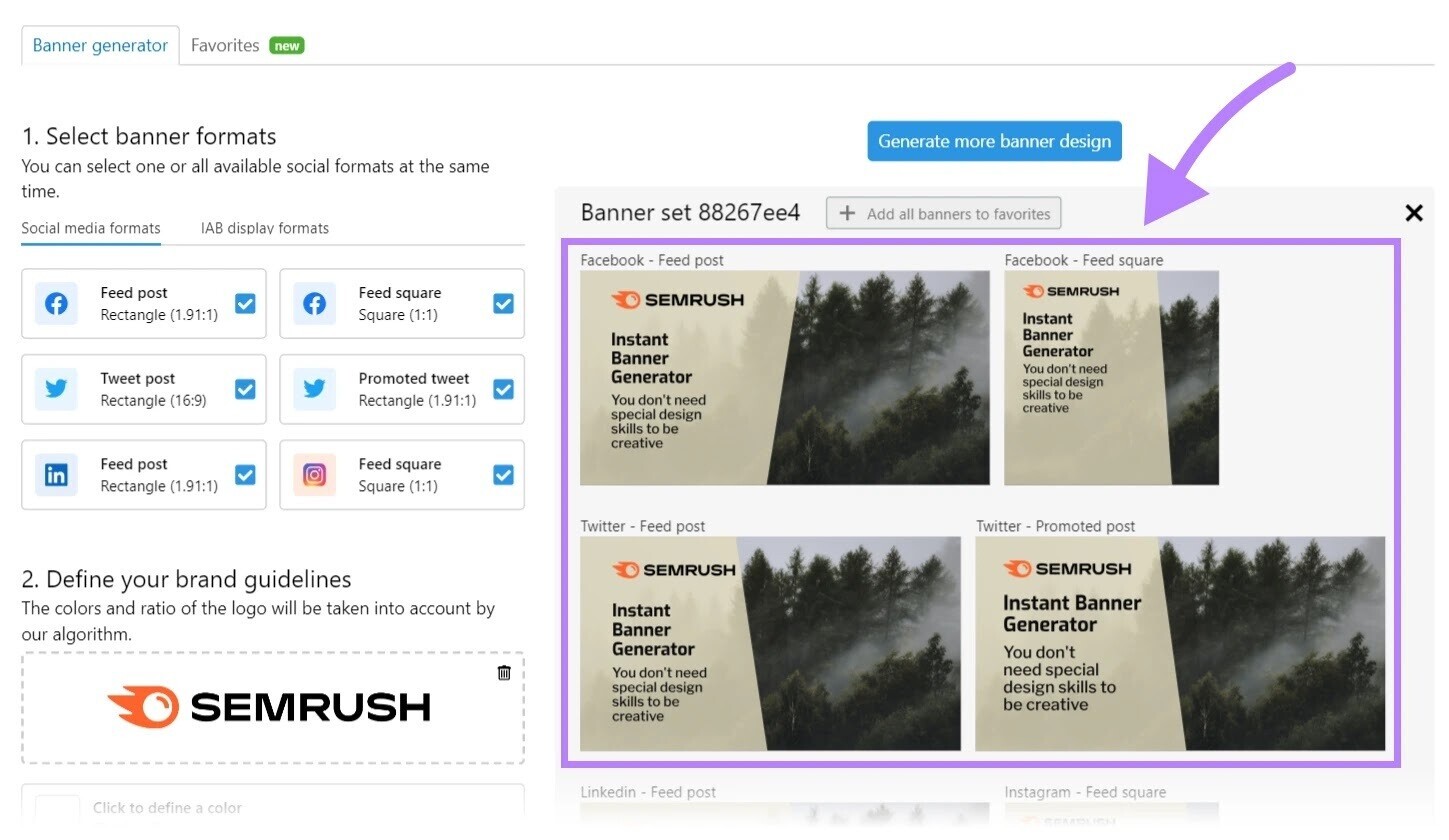
Run Your First Digital Advertising Campaign
In digital marketing, ads are a key way to reach target audiences and drive conversions. And we hope this guide helped you learn the basics of digital advertising.
Now it's time to put everything you’ve learned into practice by running your first digital advertising campaign.
Semrush has lots of tools that can help you successfully manage this campaign.
Try them today.
